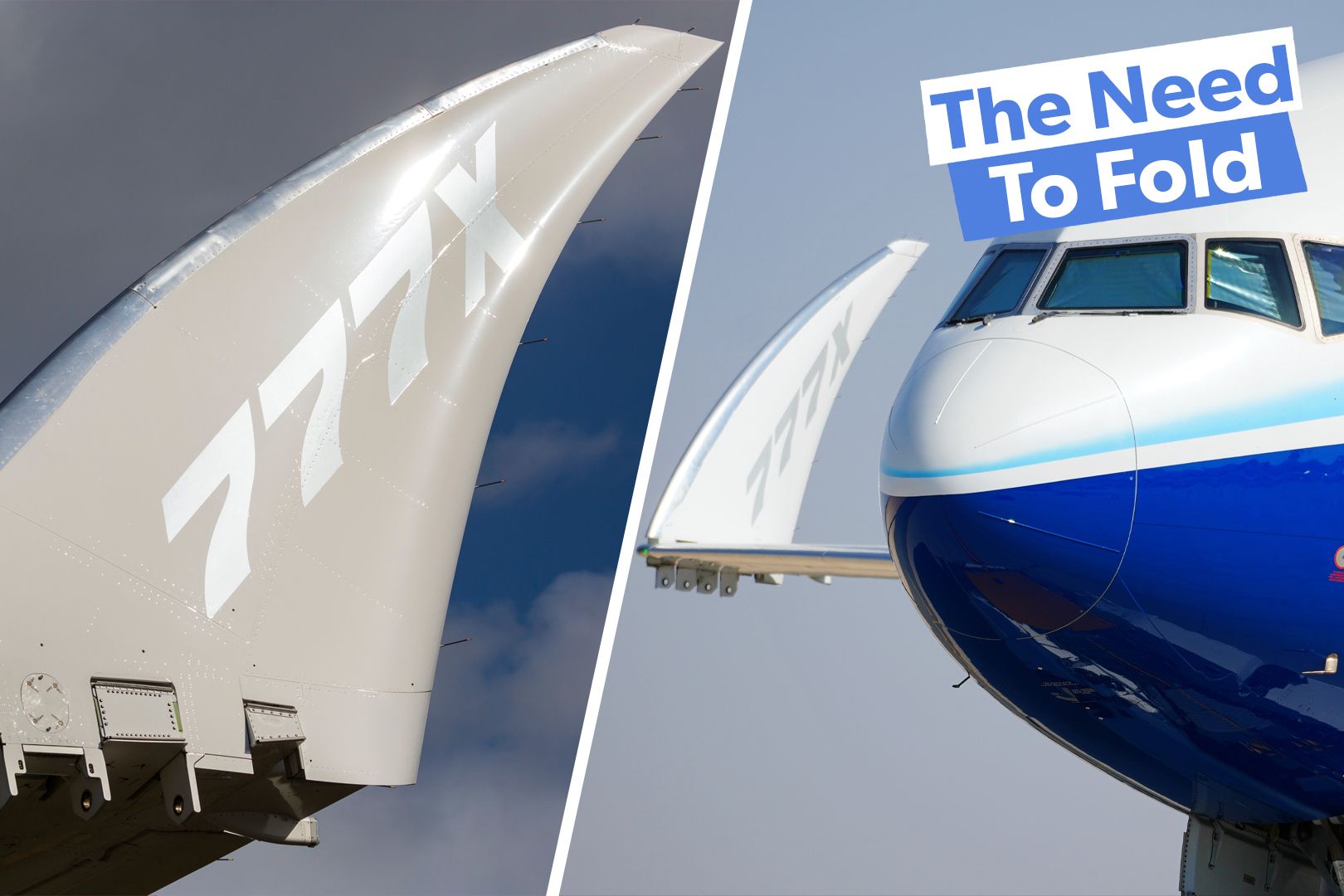Summary Folding wingtips on Boeing 777X allow for greater efficiency and lift during flight. The large wingspan compliance with airport regulations ensures its accessibility globally. The folding wing design reduces interference drag, ensuring minimal fuel burn compared to predecessors.
While not in commercial service yet, the Boeing 777X will soon become the first commercial aircraft of this size to have folding wingtips. The tips of the wings are designed to fold on the ground during taxi and parking. The tips extend and lock in place before takeoff and when in the air.

Wider wings make the aircraft more efficient, while the folding mechanism allows for desirable maneuverability and operability at major airports. This article explores why Boeing adopted the folding-wing design and how it will benefit the operability and longevity of the aircraft. 1 Limited by the wingspan The aircraft wingspan determines which airports it can operate at When the idea for a new version of the iconic Boeing 777 was born, one of the first things put on the table was its ability to fly to airports where the existing 777s could .
Keeping the aircraft wingspan within the Code E limits was essential. Most commercial airports worldwide can handle aircraft with Code E standards (i.e.
, aircraft with a maximum wingspan of 213 feet). According to Boeing , “The new Boeing 777X will be the world’s largest and most efficient twin-engine jet, unmatched in every aspect of performance. With new breakthroughs in aerodynamics and engines, the 777X will deliver 10 percent lower fuel use and emissions and 10 percent lower operating costs than the competition.
” The flagship aircraft must provide increased efficiency over existing widebodies and serve as an effective replacement for the Boeing 747. 2 To increase the total lift A greater lift coefficient is achieved in flight with a larger wingspan Why did Boeing need that large of a wingspan anyway? The answer to that question is to achieve more significant aerodynamic lift than its predecessors and market competitors without compromising efficiency . Lift is a function of the wing area (along with other parameters), which means more lift can be generated with longer wings.
The goal of transporting more passengers at a lower fuel cost per seat requires the wings to produce sufficient lift for a safe flight. Folding wingtips was the answer to finding the right balance between a higher lift coefficient and compliance with Code E for airport limits. While birds taught the early aerodynamicists the concept of lift, air resistance and its relationship with lift were poorly understood.
3 To achieve greater aerodynamic efficiency Large aspect ratio wings are more efficient Wing aspect ratio is defined as the ratio of the wing span to the wing chord. In other words, a long, slender wing has a higher aspect ratio than a short, broader wing. The Boeing 777X wing (when unfolded) mimics glider wings, which are highly efficient during flight.
The strength of wingtip vortices is much lower in long, narrow wings. Wingtip vortices occur as high-pressure air wraps around the tips of the wings, creating lift-induced drag - this can be as high as 70% of the total drag during takeoff and landing. During cruise flight, it is only a fraction of the total drag.
Thinner wings tend to minimize the effects of lift-induced drag, thereby increasing the aircraft's aerodynamic efficiency. With the Boeing 777X now undergoing certification testing, it seems as though the first delivery could finally be drawing near after several planned entries into service dates have passed. Several airlines, including Lufthansa, Emirates, and Qatar Airways have previously signalled that they wish to be the first to get the next generation Boeing widebody.
Who do you think will take delivery of the first Boeing 777X? Let us know in the comments below! (Photo: Tom Boon - Simple Flying) 4 To minimize the interference drag during flight There is lower interference between lift-induced drag and parasitic drag Parasitic drag - skin friction, form drag, interference drag Lift-induced drag - due to downwash from wingtip vortices The folding wingtips on the Boeing 777X seemed to have achieved the best of both worlds: fold up and navigate through most airports, extend out, and fly more efficiently. This larger wingspan allows the aircraft to have minimal interference drag during flight. As mentioned, lift-induced drag is a byproduct of downwash from wingtip vortices.
Having those vortices farther away from the fuselage means less interference with the parasitic drag. Parasitic drag primarily comprises skin friction drag and form drag on aircraft. Minimizing the interference between various components of drag lowers the fuel burn.
Boeing suggests the 777X has an approximately 10% lower fuel burn than its predecessors. Each of the models is responsible for testing different systems, with one aircraft, in particular, being used on the FAA certification proving flights 5 To remain compatible with previous-generation models The operational configuration is compatible with previous 777 models With the 777X, Boeing aimed to keep the new aircraft compatible with its older siblings. The folding wingtips keep the aircraft compatible with older 777s on the ground.
While there remain significant changes, some operational configuration parameters and gate and taxi procedures require minimal training. In addition to other differences, pilots must be trained to operate the folding wingtip switch accessible in the cockpit. Boeing advertises the new 777X by stating, “A true family, the 777X offers low-risk, profitable growth, industry-leading reliability and seamless integration with the 777 and 787 Dreamliner families for even more flexibility.
” The Boeing 777X has been postponed until at least 2025. Emirates president Tim Clark recently highlighted that he anticipates the first of his 205 units to be introduced by 2026. While we await the new widebody's service entry, we can only imagine the experience on long-haul routes from the likes of Dubai with Emirates, Doha, with Qatar Airways, and Singapore with Singapore Airlines.
Which routes are you looking forward to? Let us know below!.



















